Understanding Tracks & Channels
A Soft Synced Companion Guide
Soft Synced Environment → Beginner Track → The Basics Course → Lesson 5
Introduction: From Chaos to Control
Every session starts with tracks. They’re the containers where sound, notes, and ideas live. Channels are their pathway to the mixer. Think of them like band members, each with their own role, mic, and sound, but all working together. If you understand tracks and channels, your DAW stops feeling like a wall of confusion and starts working like a clear, organized studio.
Tracks as Instruments
A track (or channel) is an instrument in your band. Each one should have a clear purpose: drums on one, bass on another, vocals on their own. This makes it easier to adjust and blend later.
Audio vs MIDI
Audio Tracks: Store sound you’ve recorded or imported. What you see is the actual waveform.
MIDI Tracks: Store performance data. Which notes to play, when, and how hard, and trigger instruments inside your DAW.
Why it matters: Audio is fixed. MIDI is flexible. Audio feels like a photograph; MIDI is more like sheet music.
Activity: Record yourself clapping on an audio track. Then create a MIDI clip and draw in a few notes on a virtual piano. Compare the difference: one is frozen in time, the other editable.
Mono vs Stereo
Mono: A single channel. Focused, simple, centered. Perfect for vocals, bass, and kick drums.
Stereo: Two channels, left and right. Creates width, but only if those channels are different.
Quick test: Drop a stereo pad into your DAW. Now switch it to mono. Notice how the sound collapses to the center. Stereo creates space, but it only works if the left and right sides aren’t identical.
Contrary to Popular Belief…
Look at the screenshot on the right. Is this a mono or a stereo recording?
Correct, it is mono because you are only seeing one waveform instead of two.
Now, here’s the thing. Ever heard of the technique to widen your audio by duplicating your track, then hard panning one to the left and the other to the right? Would that work here? No, it would not. Why? Because the left and right right channels are going to be identical and stereo width is the difference between left and right channels.
Routing & Sends
Routing decides the journey your audio takes. Most tracks go straight to the master output, but they can also be grouped or sent elsewhere.
Groups & Busses: Combine tracks into a single channel. Example: all drums into one drum bus. Now you can adjust the whole kit with one fader.
Sends: Send a copy of a track’s signal to an effect (like reverb) without affecting the dry sound. Multiple tracks can share the same reverb, which glues your mix together.
Insert vs Send Effects
Insert effects process audio in series, meaning the entire signal passes through the plugin and is completely transformed, making them ideal for essential processing like EQ, compression, and gating that you want applied to 100% of your channel. Send effects, on the other hand, work in parallel: they create a separate processing path where you blend the original "dry" signal with the effected "wet" signal. This approach is perfect for reverb, delay, and other ambient effects, especially when you want multiple tracks to share the same effect space.
The key advantage of sends is efficiency. Instead of loading a reverb plugin on ten different vocal tracks, you can route all ten tracks to a single reverb send, saving CPU resources while maintaining a cohesive sound. Insert effects give you complete control and customization for each individual track, while send effects provide consistency across multiple tracks and significantly reduce your system's processing load. Knowing when to use each method will streamline your workflow and help you achieve more professional-sounding mixes.
Detailed Comparison
Setting Up Inserts and Sends in Your DAW
Ableton Live
Logic Pro
Multiple Takes and Comping
Do not expect perfection in one pass. Record three to five complete takes, then focus on the strong sections. Use DAW tools to combine the best phrases into a polished performance. Remember that feel often beats flawlessness. A take with character and groove will connect more than a technically safe one.
Producer FAQs
-
Because separation equals control. When each element has its own track, you can EQ, compress, mute, or automate without messing up anything else.
-
A bus combines tracks into one channel so you can process them together (like compressing all drums at once). A send makes a copy and routes it to an effect — perfect for reverb or delay that you want to share across tracks.
-
If left and right carry the same signal, your ear collapses it to the center. True stereo only happens when the channels differ. Try adding a chorus effect or stereo widening plugin to hear the difference.
-
Color-code. Name everything. Create buses early (drums, vocals, instruments). These habits add up, making big projects feel calm instead of overwhelming.
Quick Reference
Track Types
Audio = recorded sound.
MIDI = editable notes.
Mono = one channel. Stereo = width.
Signal Flow
Track → Bus → Master.
Use sends for reverb/delay.
One clear path = better mix.
Organization
Name tracks right away.
Color consistently.
Group early, mix easier.
Next Steps
Tracks and channels are how you build order from chaos. They’re the bones of your project — the structure that keeps everything playable and mixable. Once those bones are in place, the next step is the mixer, where levels, panning, and effects come alive.
Next: Lesson 7: Mixer Basics.
The Guides are your reference. The app is your journey.
